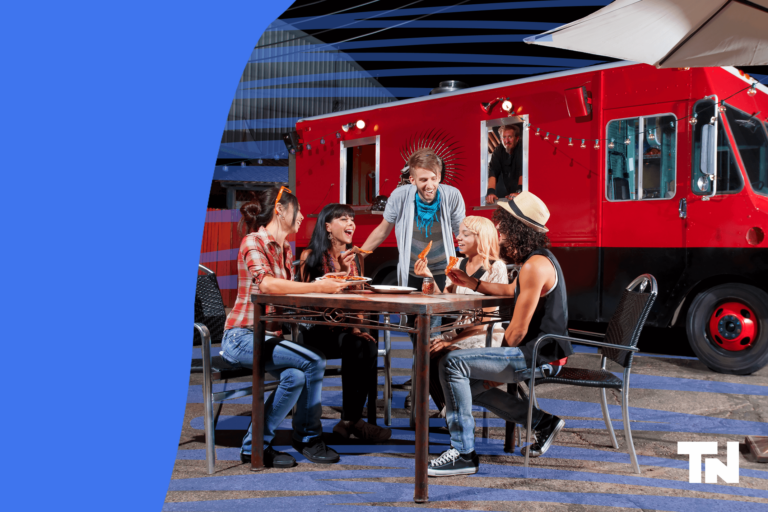It’s no secret there’s a labor shortage in the restaurant industry, or that it was among the hardest hit industries during the pandemic. Long prone to employee turnover, jobs in the service industry tend to be seen as easily replaceable, short-term, a stepping stone to other things.
Still, happy, productive employees are essential to a restaurant’s success — and to customer satisfaction. When employees feel cared for, retention improves and the diner experience does, too. Naturally, great service is pivotal to generating repeat business and recurring revenue so nurturing your staff isn’t just nice — it’s smart business.
So, how do you keep the employees you have engaged and energized? How do you combat staffing shortages? It starts with recognizing employees are the lifeblood of your restaurant and acknowledging having a great menu and inviting ambiance isn’t enough. The people who run your restaurant can make or break your success.
Elevate the employee experience
According to the Society for Human Resource Management (SHRM), employee engagement is measured by a staff member’s willingness to go the extra mile, speak positively about their employer and stay working for their employer.
While it’s true that the dining industry has to embrace restaurant technologies in order to do more with less, it can’t be at the expense of one’s staff. Study after study shows disengaged employees don’t perform at peak. A recent Gallup study, for example, found companies with highly engaged workforces outperform their peers by 147%. On the flipside, that same study found that 87% of employees worldwide aren’t engaged.
So, how do you keep your employees engaged, productive and committed to their jobs? It starts with thinking about EX — the employee experience — and recognizing it’s inextricably linked to the customer experience.
You need to know why employees work at your establishment, what they’re passionate about motivates them to engage in their work. Ask them and be prepared to listen and act on what your employees value and experience in their daily lives. Odds are, they seek a balance between income and a job they love — a job that’s filled with meaningful work they can get behind. In the case of Millennials, it may also mean having digital tools that optimize their work experience, allowing them to be productive and connected throughout their shifts.
While the term “employee experience” may seem broad, bt what it comes down to is creating an integrated, holistic-feeling experience that optimizes each touchpoint an employee comes in contact with. Think about the effort you put into the customer experience and mirror it in EX.
Track employee engagement
It’s integral to understand where your employees are at. That way you can meet them there. Begin by asking employees for feedback on their shifts. It can be as simple as creating a Google Form survey for employees to fill out after each shift. Have them rate each shift and allow them to make comments and expand on their experiences.
At the same time, track employee attendance. Knowing who is arriving on time — and late — helps you spot both star and disengaged employees. Likewise, keep an eye on employee productivity, particularly the employees who serve the fewest tables, upsell the least and receive the fewest tips. Those are clear signs of disengagement. Fortunately, you don’t have to track employee productivity manually — restaurant technology tools, like a robust POS system, can help keep an eye on your behalf.
If you see a great employee’s engagement and enthusiasm wane, you know it’s time to potentially reevaluate aspects of your work culture and business processes.
Are you paying your employees enough? Are you honoring requests for time off? Do you provide benefits like health insurance? Caring about and supporting your employees’ quality of life goes a long way toward keeping them happy, engaged and committed to working for you.
Use data to boost morale
Once you have data you can act on, it’s time to incentivize employees. One tactic is to gamify engagement to boost morale. That can mean:
- Identifying and rewarding an employee of the month
- Offering opportunities for professional development
- Providing bonuses
- Celebrating milestones
Regardless of the industry, employees want to be recognized for their hard work. They want management to see what they’ve accomplished and they want to know the company they work for is invested in their future and growth potential.
Another thing to consider is scheduling informal one-on-one time with management. It’s not only a great way to keep a pulse on things, but also to learn more about challenges your employees are facing so you can work to improve things. For employees, it’s an opportunity to share their successes and discuss aspects of the job that are getting them down. Most of all, though, it’s a chance for them to feel heard.
In a changing world, during changing times, the importance of keeping close tabs on your team’s job satisfaction can’t be overstated. Fortunately, you don’t have to go it alone. For more insight on how restaurant technologies can streamline and simplify your operations, while improving the employee experience, check out our blog.
Follow us for tips, news, and tutorials to run a successful small restaurant.






